Abstract
1. Adrenaline and noradrenaline cause a biphasic change in the transverse electrical conductance across the cat pancreas. After a latent period of from 5 to 30 sec a phase of decreased conductance lasting about 30 sec occurs which gives way to a phase of increased conductance lasting from 5 to 8 min.
2. Coincidentally with the phase of decreased conductance, vasoconstriction and a reduction in blood flow occurs and an increased blood flow with the phase of increased conductance. The blood flow and conductance records run a parallel time course.
3. Weight for weight adrenaline produces changes of greater magnitude than noradrenaline.
4. The phase of decreased conductance and blood flow was abolished by an α-receptor blocking agent and the phase of increased conductance and blood flow by a combination of α- and β-receptor blocking agents.
5. Inhibition of the volume rate of secretion coincident with the phase of decreased conductance followed rapid intravenous injection of adrenaline or noradrenaline. During the phase of increased conductance secretion either returned to control values or was transiently augmented.
6. Inhibition of secretion occurred after α-receptor blockade in the absence of vasoconstriction, suggesting that the catecholamines have a direct action on the cell.
7. β-receptor blockade increased the effectiveness of adrenaline to inhibit pancreatic secretion.
When the effects of the catecholamines on secretion were tested, secretion was always induced by secretin.
Full text
PDF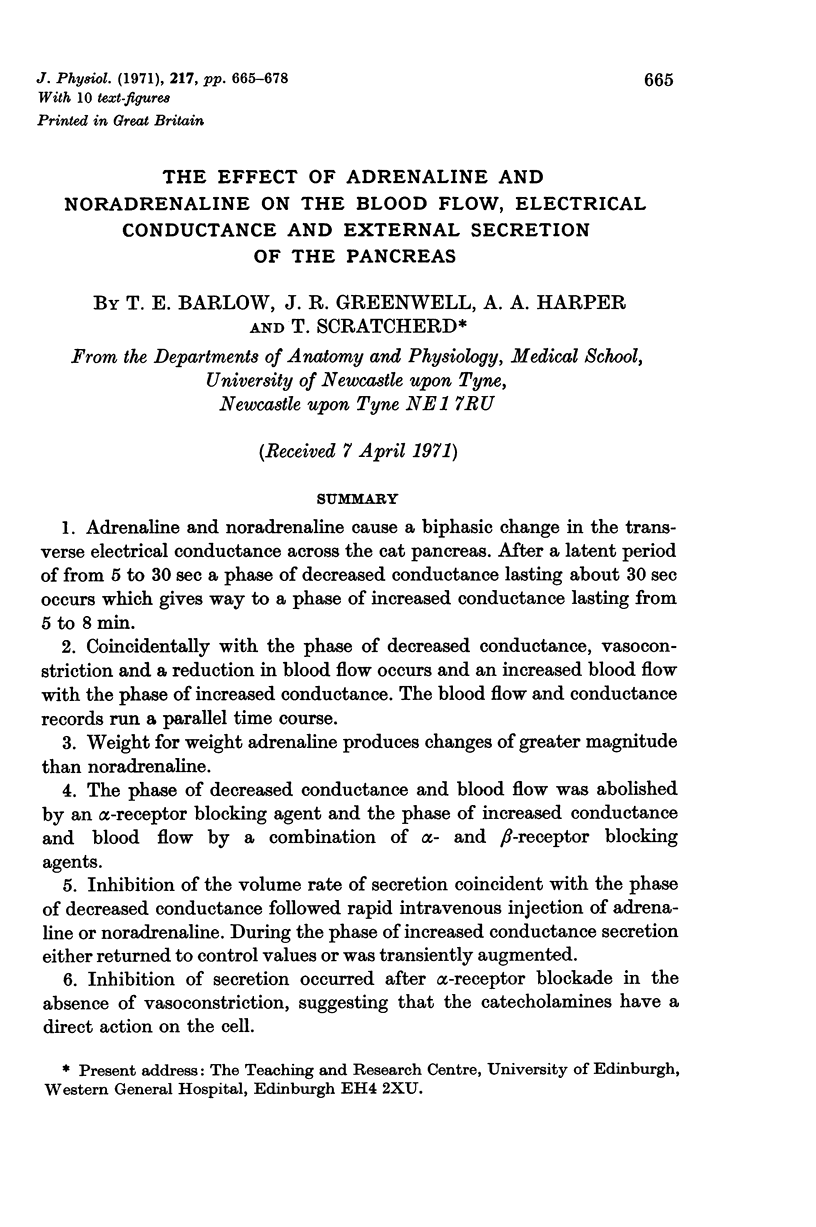

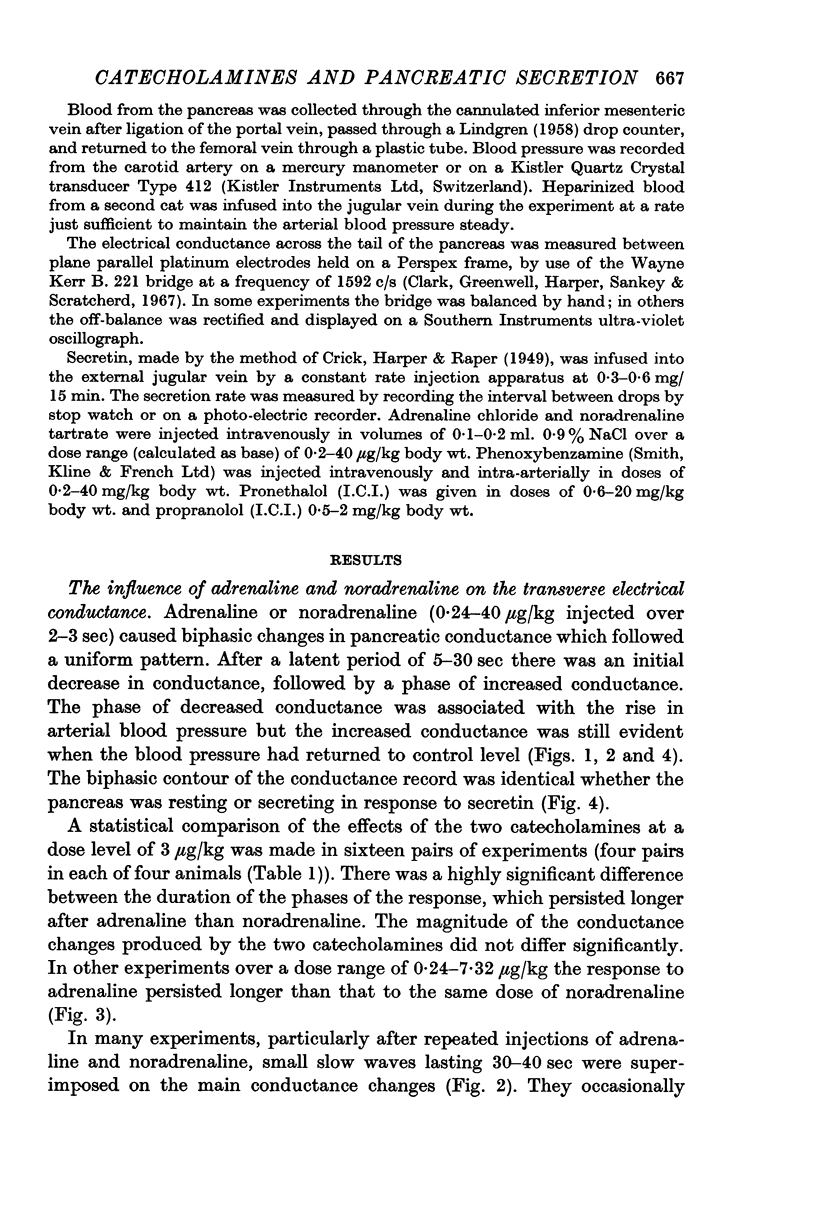

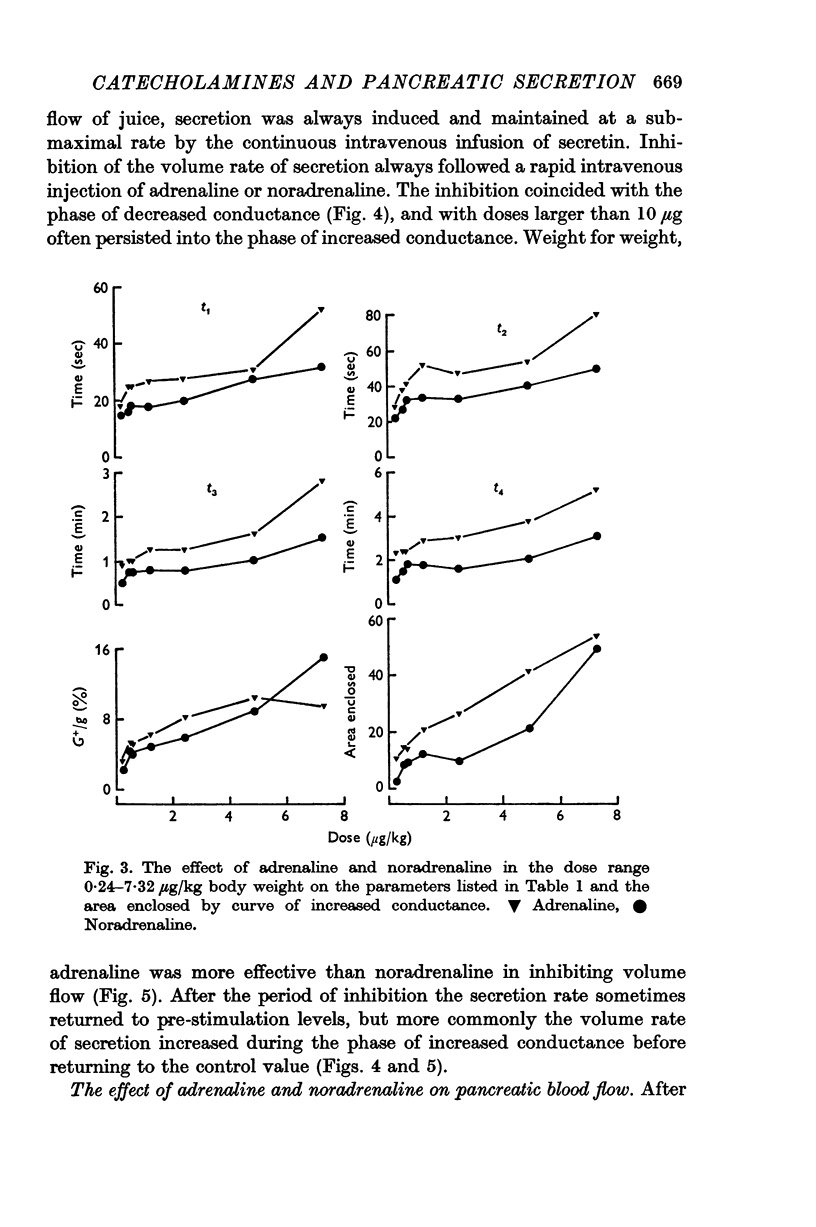
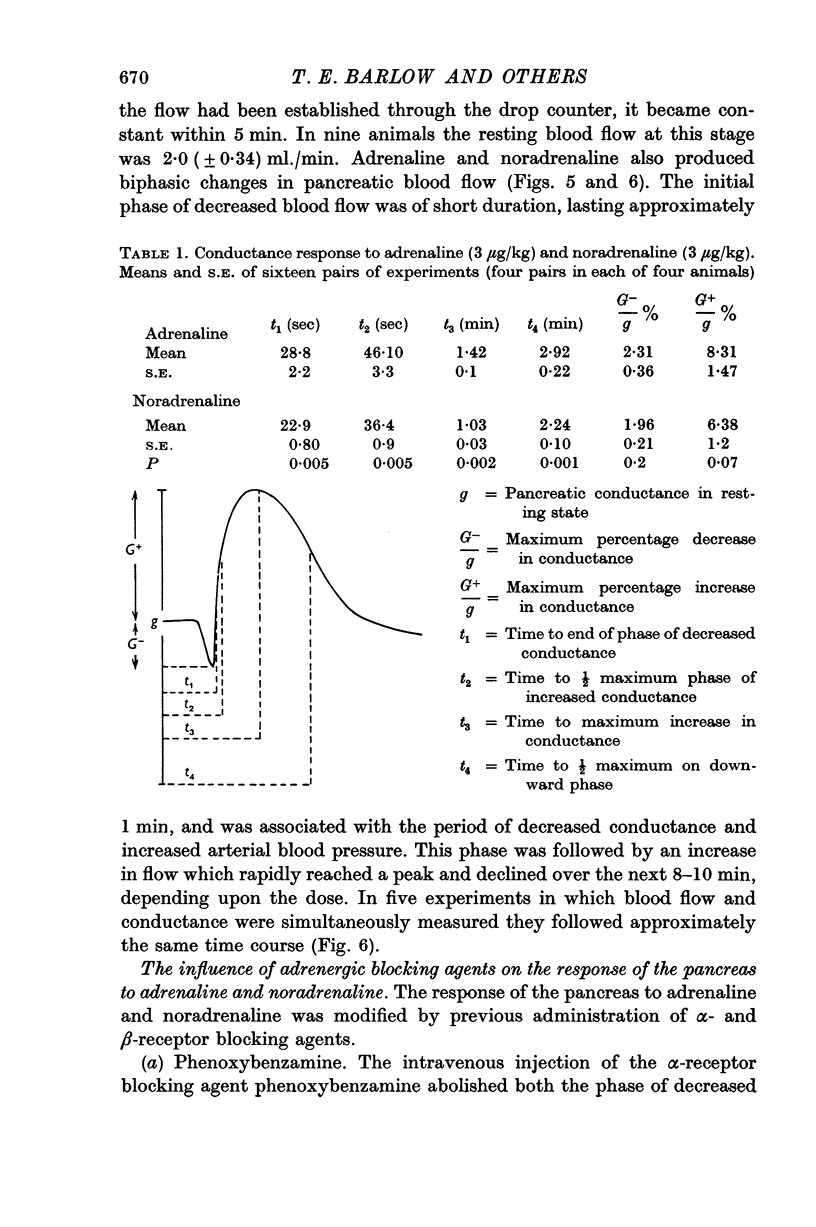
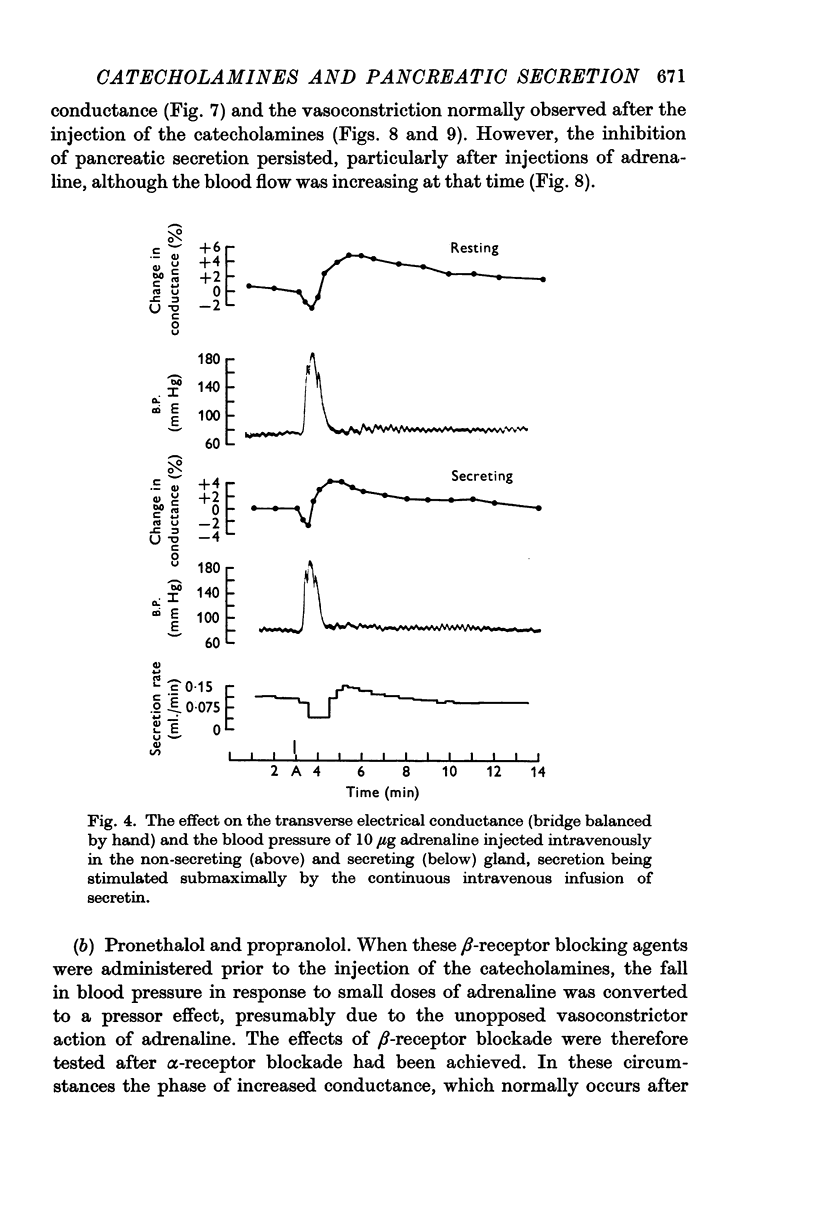
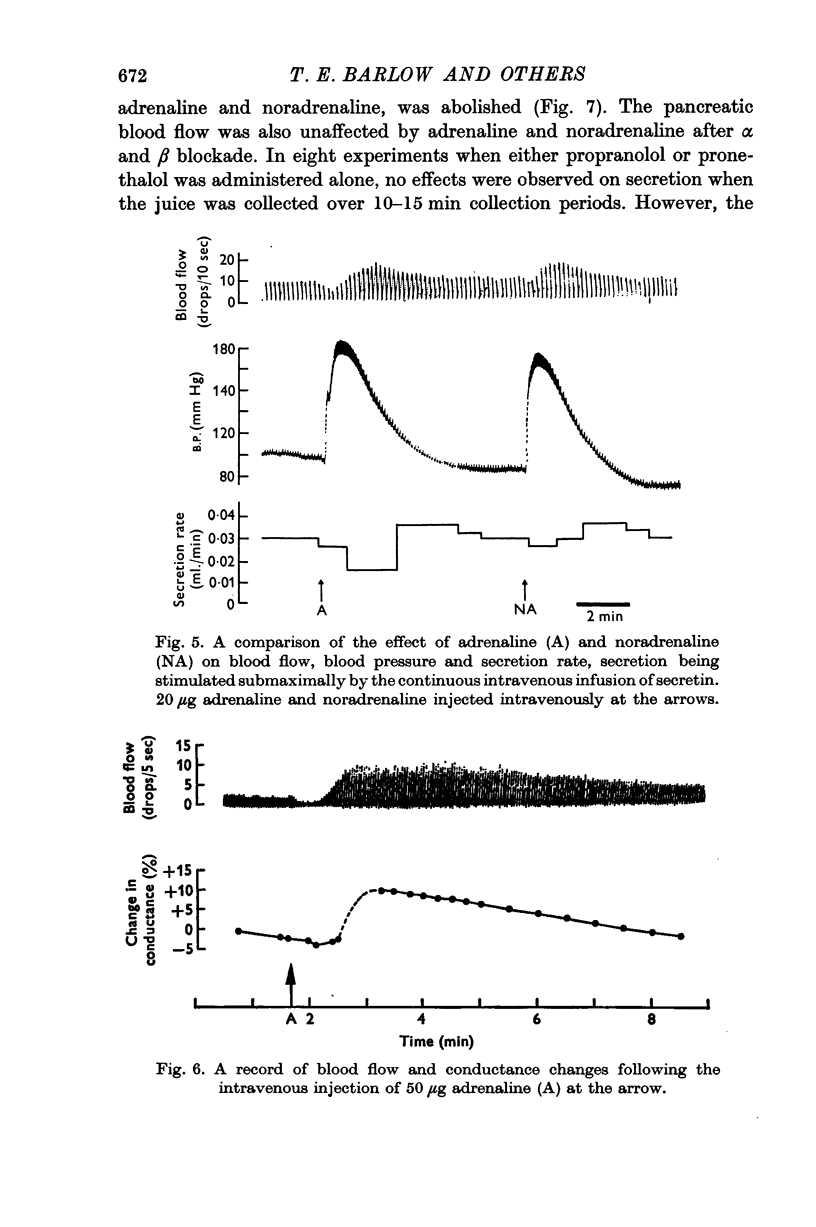
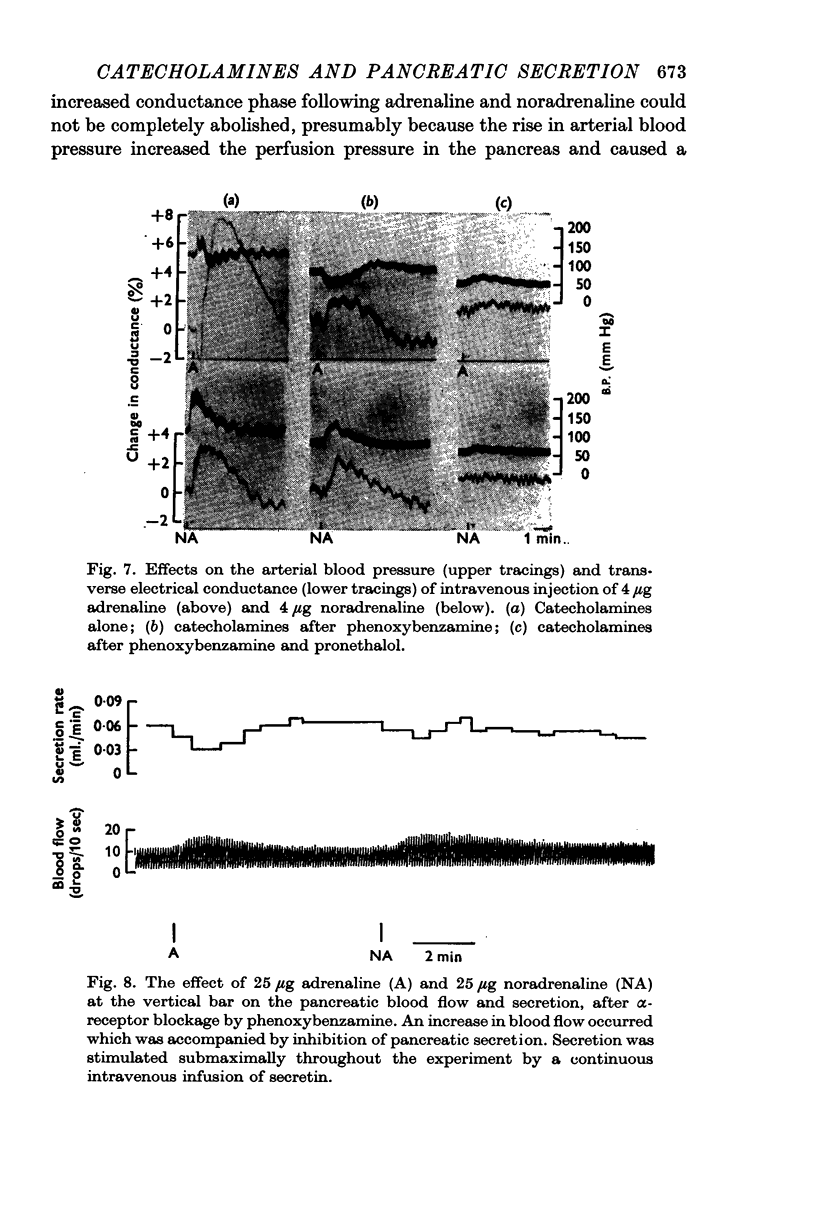
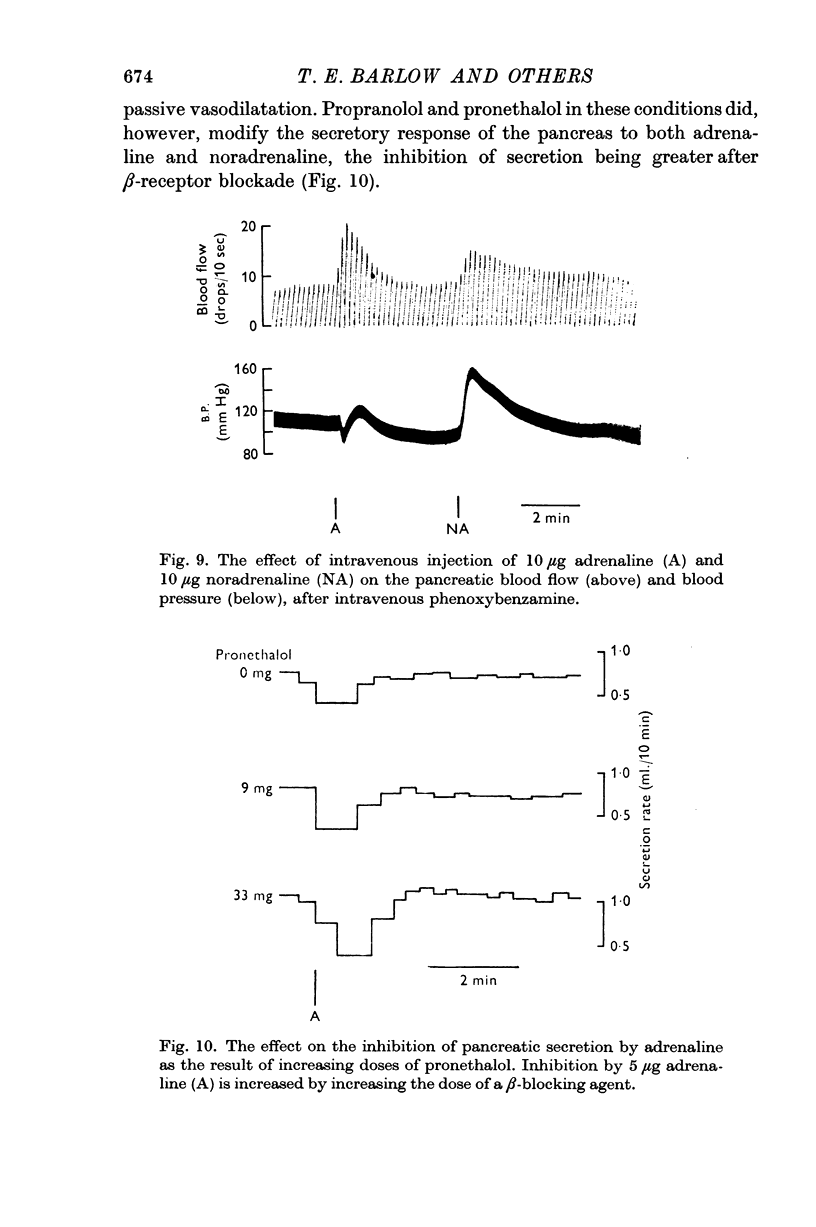
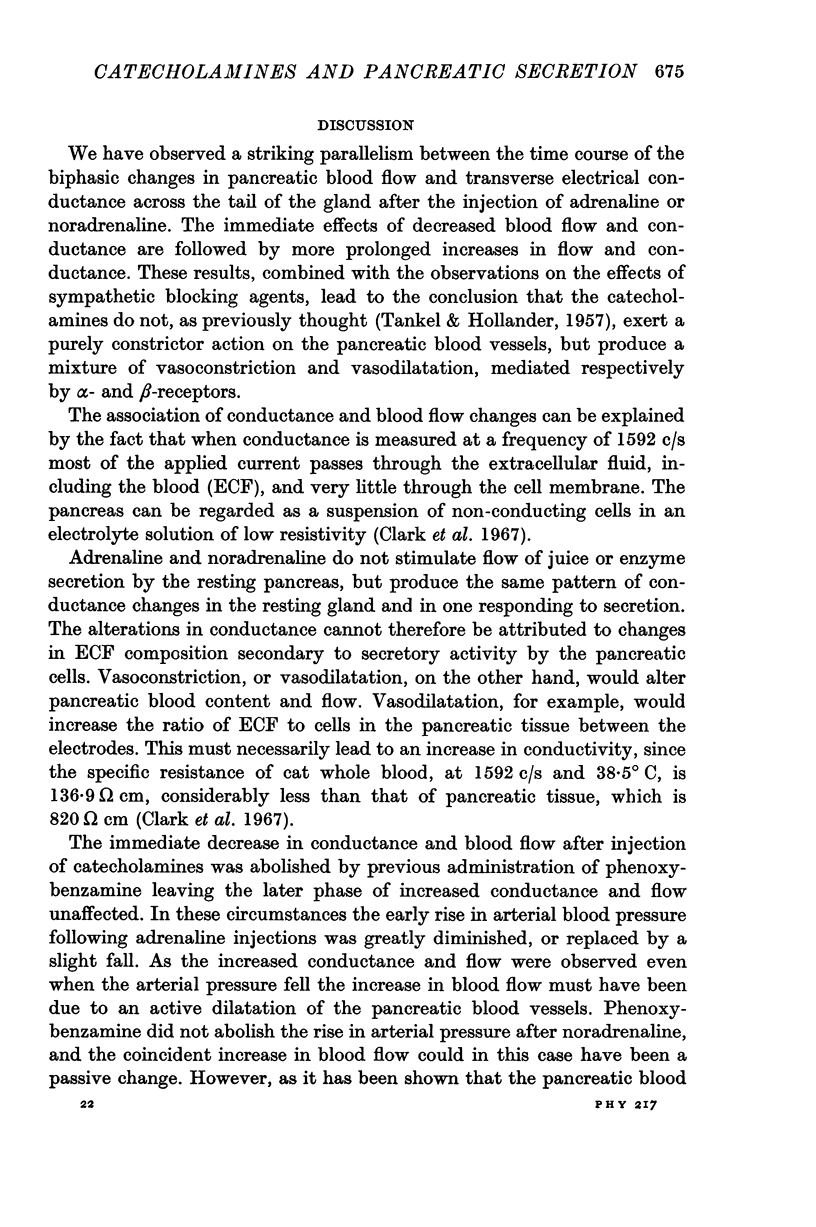
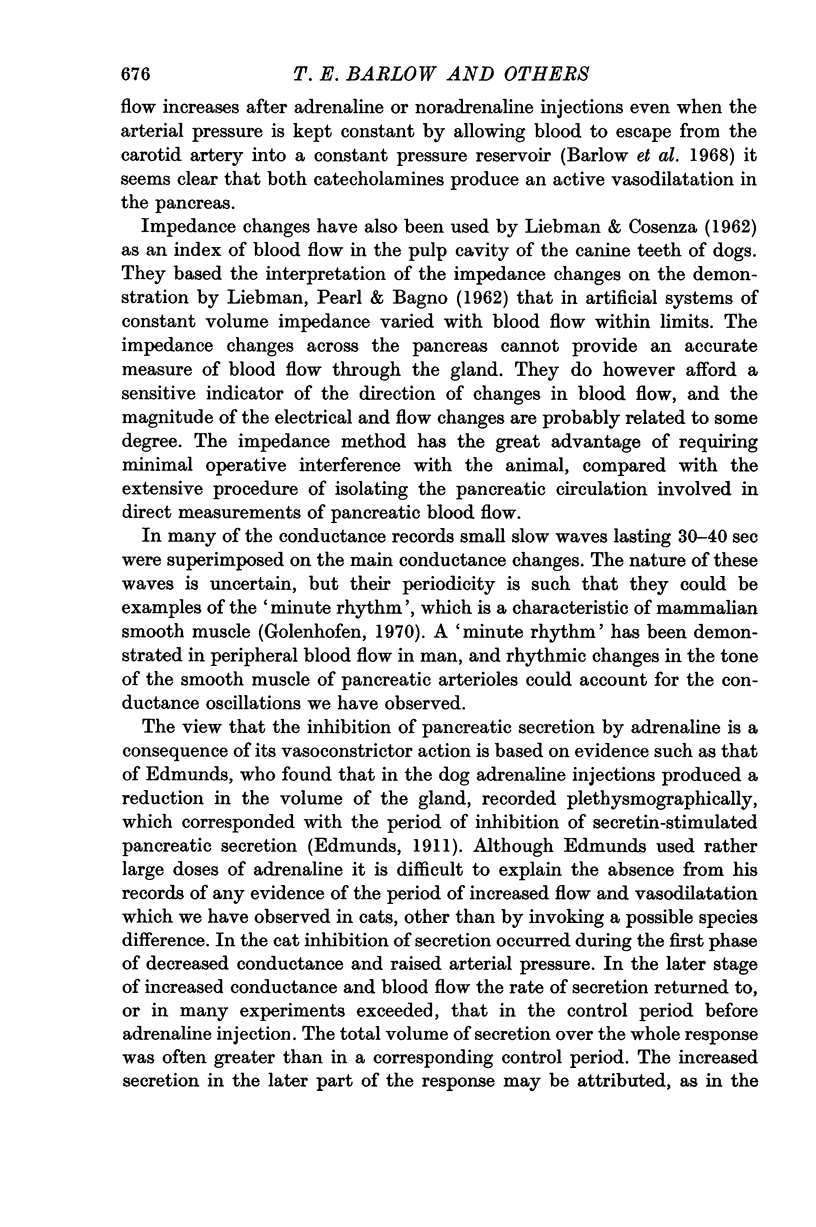
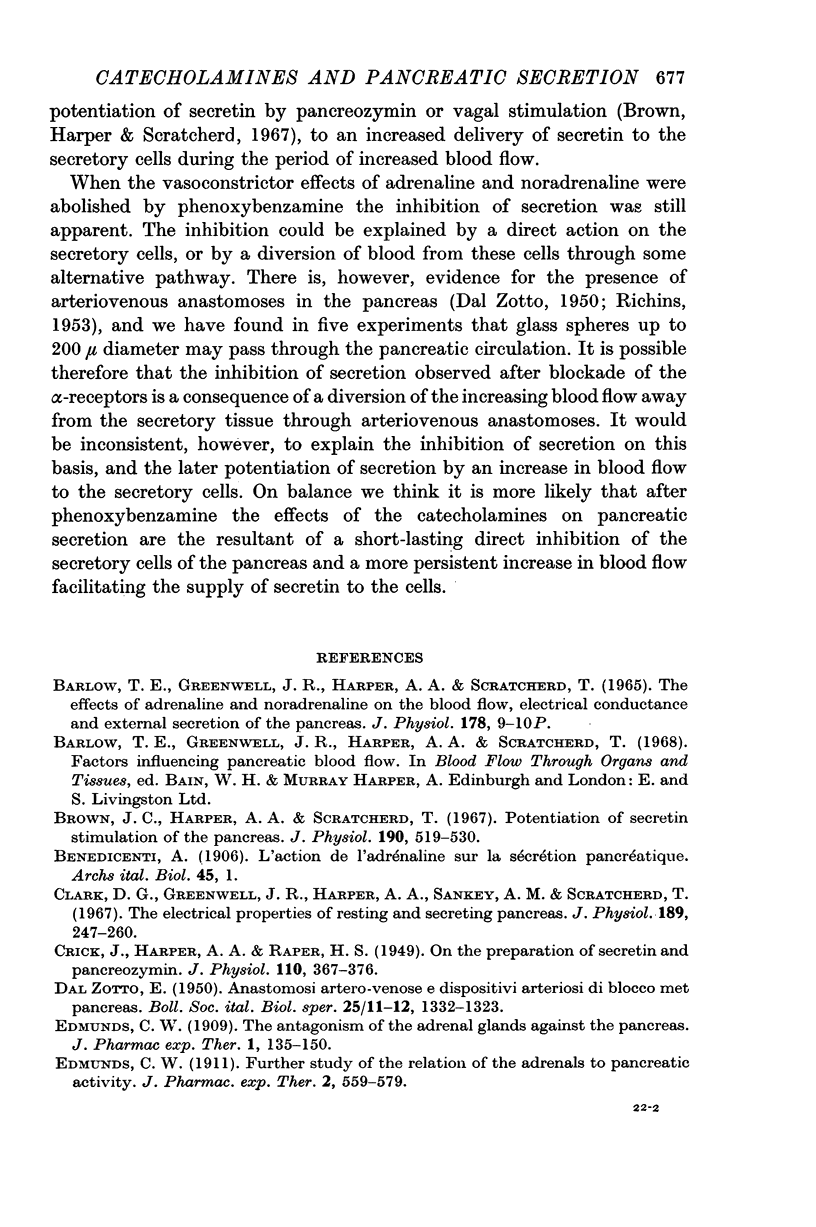

Images in this article
Selected References
These references are in PubMed. This may not be the complete list of references from this article.
- Brown J. C., Harper A. A., Scratcherd T. Potentiation of secretin stimulation of the pancreas. J Physiol. 1967 Jun;190(3):519–530. doi: 10.1113/jphysiol.1967.sp008225. [DOI] [PMC free article] [PubMed] [Google Scholar]
- CRICK J., HARPER A. A., RAPER H. S. On the preparation of secretin and pancreozymin. J Physiol. 1949 Dec;110(3-4):367–376. doi: 10.1113/jphysiol.1949.sp004445. [DOI] [PMC free article] [PubMed] [Google Scholar]
- Clark D. G., Greenwell J. R., Harper A. A., Sankey A. M., Scratcherd T. The electrical properties of resting and secreting pancreas. J Physiol. 1967 Apr;189(2):247–260. doi: 10.1113/jphysiol.1967.sp008166. [DOI] [PMC free article] [PubMed] [Google Scholar]
- LIEBMAN F. M., COSENZA F. Study of blood flow in the dental pulp by an electrical impedance technique. Phys Med Biol. 1962 Oct;7:167–176. doi: 10.1088/0031-9155/7/2/303. [DOI] [PubMed] [Google Scholar]
- LIEBMAN F. M., PEARL J., BAGNO S. The electrical conductance properties of blood in motion. Phys Med Biol. 1962 Oct;7:177–194. doi: 10.1088/0031-9155/7/2/304. [DOI] [PubMed] [Google Scholar]
- LINDGREN P. An improved method for drop recording of arterial or venous blood flow. Acta Physiol Scand. 1958 Feb 10;42(1):5–11. doi: 10.1111/j.1748-1716.1958.tb01536.x. [DOI] [PubMed] [Google Scholar]
- RICHINS C. A. Effect of sympathetic nerve stimulation on blood flow and secretion in the pancreas of the cat. Am J Physiol. 1953 Jun;173(3):467–470. doi: 10.1152/ajplegacy.1953.173.3.467. [DOI] [PubMed] [Google Scholar]
- TANKEL H. I., HOLLANDER F. The relation between pancreatic secretion and local blood flow: a review. Gastroenterology. 1957 Apr;32(4):633–641. [PubMed] [Google Scholar]



